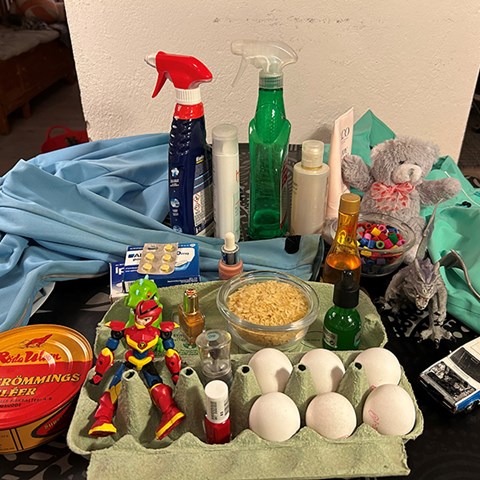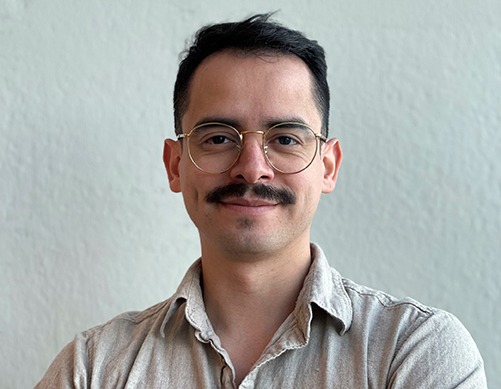The chemical cocktail in the bodies of Swedish young people reflects country of birth, place of residence and gender

The number of chemicals is steadily increasing in our environment and also in ourselves. However, the chemical mix that today's school youth in Sweden carry within them looks different in different demographic groups. Which chemicals that are found in elevated concentrations is influenced by the country where you were born and where you currently live in Sweden, but also by your gender. These results and possible health risks are presented in a doctoral thesis from SLU by Sebastian Pineda, based on the most comprehensive survey of the chemical exposure of Swedish youth to date.
“These inequalities need to be addressed if the United Nations' sustainability goals of equality within and between countries and between genders are to be achieved”, says Sebastian Pineda.
Modern man lives in a world where there is an abundance of chemicals everywhere, also in the clothes we wear, the food we eat and the very air we breathe. However, we know very little about the risks of being exposed to this “chemical cocktail” - the complexity of chemical mixtures presents a formidable challenge in toxicology.
Through his doctoral work at SLU, Sebastian Pineda has participated in a first step in the exploration of the chemical mixtures that young people in Sweden are exposed to and the health risks that these mixtures could entail. In his work, he has used chemical analyses of blood and urine samples that were collected in a large survey carried out by the Swedish Food Agency, and thereby he has been able to draw general conclusions about school children throughout the country.
Reflects the situation in other highly industrialized countries
Sebastian Pineda has paid special attention to certain groups of chemicals. Some of these can remain in our bodies for years, including certain metals that can be harmful to health and chlorinated, brominated or fluorinated organic compounds (persistent organic pollutants, or “POPs”), including PFAS. Others disappear from the body within a few hours or days, but are constantly present in the young people's environment, for example in everyday products such as plastics, make-up, skin care products and hygiene products.
“An important conclusion is that adolescents in Sweden are exposed to a chemical cocktail similar to that seen in other highly industrialized countries, such as Germany, Belgium and the USA”, says Sebastian Pineda. “One exception is a type of POPs that occurs in much higher concentrations among adolescents in the United States, being used as a flame retardant”.
Clear differences depending on which country you were born in ...
Something that was new and striking in the survey was how important the country of birth was, and also where the mother was born. Adolescents who were born in highly industrialized countries, mainly Sweden, had in average clearly higher levels of many POPs in their blood than adolescents who were born in developing countries.
An exception was a breakdown product of DDT and a component of lindane, two insecticides that have long been banned in Sweden and many other parts of the world. These very stable substances were present in significantly higher concentrations in adolescents born in developing countries. Higher levels of several rapidly excreted chemicals found in many different everyday products were also observed in this group, compared to young people who were born in Sweden or had mothers born in an industrialised country such as Sweden.
“We know that many POPs we receive during the foetal stage and through mother's milk leave traces that remain well into adolescence. More surprisingly, the country of birth also had a clear impact on the levels of substances that are excreted rather quickly from the body. In our database, however, there is no information about possible exposure sources that can help us explain this”, says Sebastian Pineda.
... and where you live, and your gender
The study also shows for the first time that exposure to certain substances differs between the south and the north of Sweden. This applies to the metals cobalt, nickel and lead, and certain brominated flame retardants and plastic chemicals.
“The levels of these flame retardants and plastic chemicals were higher in young people up north. We suspect that it is related to housing conditions, because we know that the indoor environment is a major exposure factor for these substances”, says Sebastian Pineda.
Gender was also linked to elevated levels of certain substances. Boys, for example, had higher levels of chromium, mercury and lead, and many POPs in their blood, but lower levels of substances that were measured in urine. A contributing reason for the higher levels may be that boys on average eat more food, which can be a source of exposure to the metals and POPs, than girls, but also that the older girls get rid of some PFAS via menstrual blood.
Among the substances that were found in higher concentrations in girls are many that are used in make-up and in skin care and hygiene products. The girls also had higher levels of cadmium, which may be due to a poorer iron status, which increases the absorption of the heavy metal.
The assessment of health risks has only just begun
So, how seriously should we view the chemical exposure to which Swedish young people are exposed? An initial risk assessment suggests that further more detailed and specific studies are needed of chemicals that can affect the central nervous system, to enable us to draw more confident conclusions about the health risks these chemicals may confer. These include lead, mercury, aluminium and certain POPs.
Sebastian Pineda and his colleagues have also investigated the impact that chemical mixtures may have on the immune system in young people. However, the associations between mixture exposure and the levels of vaccination antibodies against diphtheria, tetanus and pertussis ,as well as measles and rubella, in the blood were weak and uncertain.
“The mixture that the youngsters had been exposed to did not seem to be high enough to give a clear affect on the levels of antibodies, but my thesis is only a first investigation of possible chemical mixture effects on the complex immune system of adolescents”, Sebastian Pineda emphasises.
The doctoral work has been carried out in collaboration with researchers from SLU, the Swedish Food Agency, Lund University and Stockholm University.
---------------------------
MSc Sebastian Pineda, Department of Animal Biosciences, defended his doctoral thesis, Understanding chemical mixtures in Swedish adolescents: an epidemiological investigation into exposure, sociodemographic determinants and immune-health effects, on 18 October 2024 at SLU in Uppsala.
More about the dissertation and link to the thesis (pdf)
Links to two studies already published in scientific journals
More information
Sebastian Pineda, PhD student
Department of Animal Biosciences, Unit of Pharmacology and Toxicology
Swedish University of Agriculture, Uppsala
sebastian.pineda@slu.se, 018-67 34 79
https://www.slu.se/en/ew-cv/sebastian-pineda/
Press images
(May be published without charge in articles about this press release, please include the name of the photographer).)
Sebastian Pineda. Photo: Private
In our modern world there are chemicals everywhere, also in the clothes we wear, the food we eat and the air we breathe. Photo: David Stephansson
More about the Riksmaten Ungdom survey
Roughly 3,000 young people in grades 5, 8 and 2 at upper secondary school participated in Riksmaten ungdom. They recorded what they ate and drank, and answered a lifestyle questionnaire. Just over 1,000 students also submitted blood and urine samples.
Based on the results, the Swedish Food Agency has analysed how much of different foods the young people eat, how much nutrition they get, how much they move and whether they get harmful substances from the food. A number of in-depth analyses have also been carried out, including those included in Sebastian Pineda's doctoral thesis.
